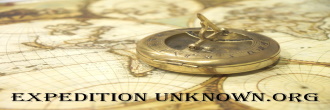The discoveries made in this episode are simply outstanding – one that could reshape our modern rules and policies, so as to preserve our present for the future generations.
This episode revolves around the Maya, a particular set of people known for hunting, but there may be new evidence pointing to the fact that the Maya was the most dominant civilizations in the western hemisphere. Archeologists have been scouting the area to find some clues and hints that may point way to where one of their lost cities was built – a place known as El-Mirador.
To perhaps uncover the mysteries of the snake kings and their tombs, Josh travels to the city of Guatemala in Central America to meet with Dr. Stanley Gunter for a crash course in Maya history. Dr Gunter says that Maya history is divided into two – the pre classic period and the classic period. Most of what is known about the Maya comes from the time known as the classic period that spans from the year 300-900AD, but two thousand years before this period was the pre classic era, and it is a huge mystery.
Archeologists conclude that during the pre classic period, the Maya people were hunters and gatherers, and their entire civilization collapsed around the year 150AD. However, a vase found at the jungle ruins of El-Mirador, a Maya city, indicates there were a powerful civilization so sophisticated and was ruled over by about nineteen powerful rulers known as “the snake kings,” but their burials have never been found.
Josh and his team in a bid to find these snake kings – where they were buried, head for the Maya Biosphere Reserve, specifically the Mirador Basin, meet with Dr. Richard Hansen who had been studying there for over thirty years. It was Dr. Hansen that first discovered that the Maya were more than primitive people in a primitive village. There is now evidence that this Maya city was a huge hub of commerce as large as today’s Los Angeles. Dr. Hansen shows Josh some mystery hidden under a building, which appears to be a burial of a very important person in Maya. The corpse is seen clutching a bowl, which signifies affluence.

Josh and Dr. Hansen drive towards the great pyramid and Josh is shown an array of remarkable road networks and structures built by the Maya. They get to the foot of the pyramid – their aim, to get on top and scout the area to reveal more cities. They climb the gigantic pyramid with four levels and purely sophisticated architectural skills, even by modern standards. On getting to the top, before they fire up their scouting equipment, a storm is seen coming in and they abort till the next morning where they use a helicopter to scout the area for more cities and pyramids hidden under the sands and thick trees. The sea of green in the jungle covers absolutely everything. Their equipment reveals something outstanding. Indeed, they find a city and more pyramids. Dr. Hansen speculates that it’s a religious temple or palace compound and has hopes that the snake kings were buried beneath the grounds there.
Using a GPS, they bushwhack towards the formerly lost city, but on getting to the pyramid, another storm hits. Once again, they abort mission till the weather clears out.
The next morning, Josh has to leave the jungles or risk getting stuck in another storm that may last up to a week. However, three months later, he returns and Dr. Hansen has found something extraordinary.

Josh meets a whole city formerly covered by trees and sands, incredible architecture, and they even find a stone which served as a memorial to a snake king. Inscriptions on the stone pointed to the fact that it was in honor of a snake king – a truly remarkable find.
However, Dr. Hansen states something thought provoking. The importance of finding and uncovering every mystery behind the Maya cannot be overemphasized. They were once a great dynasty, cutting and chopping down trees to build roads and other facilities until they had nothing left and eventually collapsed. It is important that we learn from them so we don’t make the same mistakes they did.
The question remains: what happened to the Maya? Where were the snake kings buried? And most importantly, are we, as a modern society headed for the same fate as the Maya – a once flourishing economic civilization destroyed and forgotten?
These questions are not only thought provoking, they reach into our very existence as modern people.














